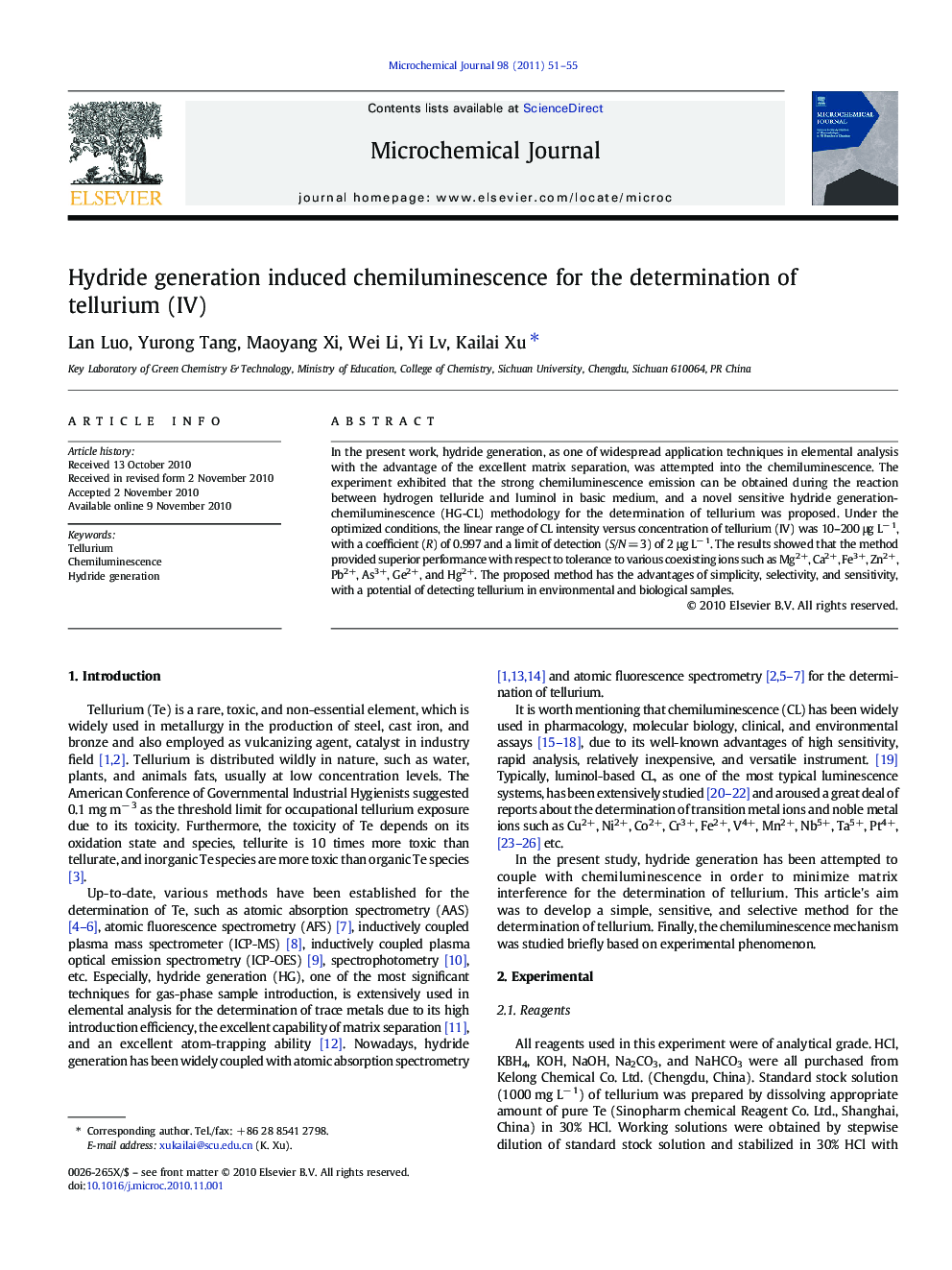| Article ID | Journal | Published Year | Pages | File Type |
|---|---|---|---|---|
| 10556904 | Microchemical Journal | 2011 | 5 Pages |
Abstract
In the present work, hydride generation, as one of widespread application techniques in elemental analysis with the advantage of the excellent matrix separation, was attempted into the chemiluminescence. The experiment exhibited that the strong chemiluminescence emission can be obtained during the reaction between hydrogen telluride and luminol in basic medium, and a novel sensitive hydride generation-chemiluminescence (HG-CL) methodology for the determination of tellurium was proposed. Under the optimized conditions, the linear range of CL intensity versus concentration of tellurium (IV) was 10-200 μg Lâ 1, with a coefficient (R) of 0.997 and a limit of detection (S/N = 3) of 2 μg Lâ 1. The results showed that the method provided superior performance with respect to tolerance to various coexisting ions such as Mg2+, Ca2+, Fe3+, Zn2+, Pb2+, As3+, Ge2+, and Hg2+. The proposed method has the advantages of simplicity, selectivity, and sensitivity, with a potential of detecting tellurium in environmental and biological samples.
Related Topics
Physical Sciences and Engineering
Chemistry
Analytical Chemistry
Authors
Lan Luo, Yurong Tang, Maoyang Xi, Wei Li, Yi Lv, Kailai Xu,
